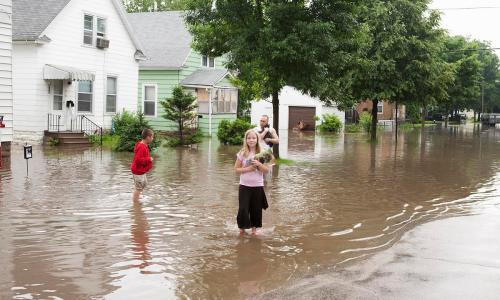Across the Midwest, signs of our rapidly changing climate become clearer each year. Records show that spring is arriving sooner, dangerously hot weather is occurring more often, and winters are becoming warmer and less snowy.
Climate research shows that if global warming emissions continue to grow unabated, the Midwest can expect dramatic temperature increases and other climate changes over the course of this century. If the rate of emissions is lowered, however, projections show the changes will be significantly less.
The growing risks of dangerously hot weather
Rising temperatures are not just a concern for the future. Dangerously hot weather is already occurring more frequently in the Midwest than it did 60 years ago.
The report, Heat in the Heartland: 60 Years of Warming in the Midwest, presents an original analysis of weather data for five major urban areas — Chicago, Cincinnati, Detroit, Minneapolis, and St. Louis — as well as five smaller nearby cities.
The results from the analysis are clear: Hot summer weather and heat waves have been increasing in cities in the nation’s heartland over the last six decades on average, with significant, and growing, implications for public health.




